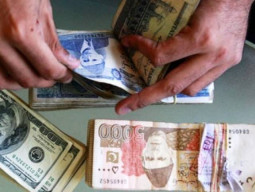
KARACHI: Pakistan’s tax-to-GDP ratio has remained stagnant at around 11% for the past two decades. To overcome the chronic fiscal weakness, the government has decided to accelerate unconventional drive of deploying technology like point of sales (POS) at retail outlets over the next six months.
The government has targeted to deploy around 8,500 electronic devices like POS at retail outlets by end of December 2020 with the primary objective of bringing vendors into the taxpayers net and document financial transactions and the economy.
“The narrow tax base has been expanded by bringing retailers into the tax net and successful installation of point of sales (POS) system at 6,616 retail outlets with the aim to increase the number to 15,000 by December this year,” Federal Minister for Industries and Production Hammad Azhar said while presenting the budget for FY21 at the national assembly the other day. “The efforts (including policy reforms) have so far produced encouraging results with a promising future,” he said.
Therefore, the federal government has proposed in the budget for FY21 to decrease the rate of sales tax to 12% for retailers registered with POS from 14% at present. “This (rate cut) will give relief to common man and to business (including from Covid-19 effects). The measure will help in documentation of economy.”
“Today Pakistan’s tax-to-GDP ratio stands at 11% which is the lowest among emerging countries. Regrettably this key indicator of fiscal strength has remained stagnant over the past 20 years,” Azhar said.
The government has targeted to collect Rs4.9 trillion in taxes during the next fiscal year starting July. That is around 26% higher than the estimated collection of Rs3.9 trillion in the outgoing fiscal year 2020.
Other measures to improve tax-to-GDP ratio include the recent launch of a tax return mobile app to facilitate individuals and salaried persons. The application has helped in increasing the number of income tax return filers by 37%, the minister said.
Besides, an automated system of payment of taxes through online platforms has been introduced.
“To broaden the tax base, the condition of CNIC was introduced in Finance Act 2019, since persons involved in furtherance of taxable activity need to be captured through such measures. However, in order to ease compliance cost, it is being proposed that the threshold may be enhanced from Rs50,000 to Rs100,000,” he said.
Moreover, successful anti-smuggling and enforcement drives have been carried out which led to increase in seizures from Rs19 billion to 30 billion. The crackdown against smugglers would also help in increasing the number of taxpayers and collection of revenue in taxes.
The revenue collection during the pre-covid period has also been commendable. The domestic taxes had witnessed a growth of 27% and collection from import grew by 7%. But the expected growth in revenues was marred initially by the structural adjustments in the economy and then by the pandemic, which has indiscriminately affected all countries of the world.
Resultantly, the revenue target for fiscal year 2020 of Rs5.5 trillion which was revised to Rs4.8 trillion in view of policy induced import compression was further revised downwards to Rs3.9 trillion. “However, this did not deter us from taking steps to avert possible economic shocks of this pandemic,” he added.
Published in The Express Tribune, June 21st, 2020.
Like Business on Facebook, follow @TribuneBiz on Twitter to stay informed and join in the conversation.












































COMMENTS
Comments are moderated and generally will be posted if they are on-topic and not abusive.
For more information, please see our Comments FAQ